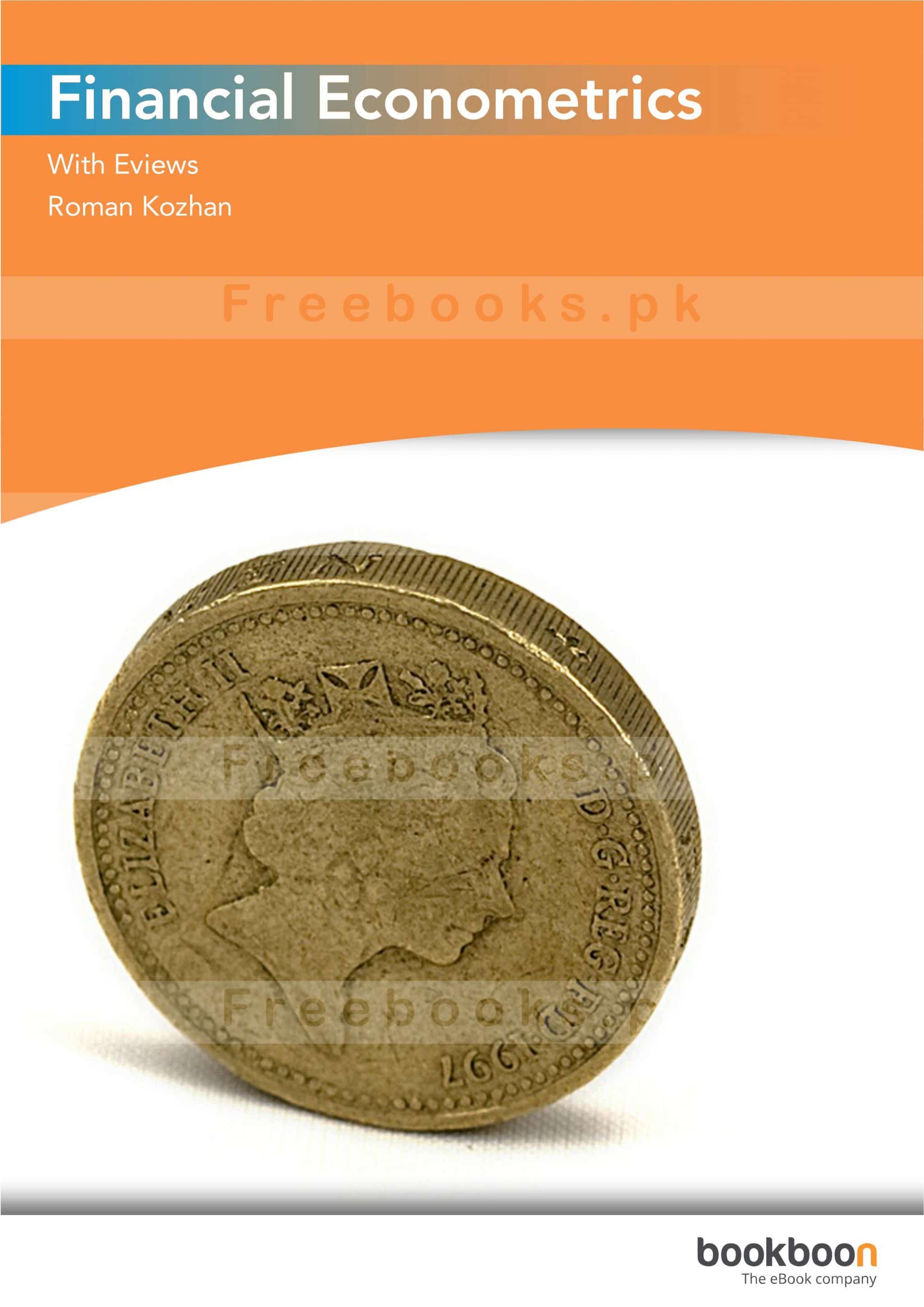
the book Financial Econometrics by Roman Kozhan is free Download here. you can learn in this book, Creation to EViews 6.zero.
EViews is a simple, interactive econometrics bundle that proves many types of equipment used in econometrics. It presents users with numerous convenient methods of appearing analysis inclusive of windows and a command-line interfaces.
Many operations that can be carried out the usage of menus can also be entered into the command window, or located in applications for batch processing. The possibility of using interactive functions like windows, buttons, and menus makes EViews person-friendly software.
In this chapter, we in short introduce you main capabilities of the language, will display you the usage of some important instructions as a way to be used further in this textbook.
we will begin with the interactive windows interface after which move into an extra precise description of the EViews’ batch processing language and advanced programming functions.
Financial econometrics is a necessary segment of present-day quantitative exchanging. Forefront precise exchanging calculations set aside a few minutes arrangement examination methods for anticipating purposes.
In this way, in the event that you wish some time or another to end up a talented quantitative broker, it is important to have broad information on econometrics.
Regression model
This chapter begins with the creation of a linear regression evaluation, estimation and inference strategies. Regression evaluation is a widely used tool in economic econometrics. They may be used to explain and examine the connection among economic variables, carry out forecasting responsibilities.
This bankruptcy presents most effective a quick and quick description of important gear used in the regression evaluation. extra specific discussion and deeper theoretical background can be found in Greene (2000), Hamilton (1994), Hayashi (2000), Verbeek (2008), generators (1999), Zivot and Wang (2006).
Univariate Time series: Linear fashions
Time series is a chain of numerical facts in which observations are measured at a selected instant of time. The frequency of statements can, for instance, be annual, quarterly, month-to-month, day by day, and so on. The main goal of time collection analysis is to have a look at the dynamics of the information.
In this chapter, we introduce simple time series models for estimation and forecasting of monetary statistics. In addition details about the theory of time collection evaluation cab be located in Hamilton (1994), Greene (2000), Enders (2004), Tsay (2002), and others.
Stationarity and Unit Roots checks
Much monetary time collection, like change fee levels of stock fees, seems like non-desk bound. New statistical issues arise when studying non-desk-bound information. Unit root checks are used to locate the presence and form of non-stationarity.
This chapter critiques the main ideas of non-stationarity of time series and seasoned-vides an outline of a few checks for time collection stationarity. Extra information about such exams can be found in Hamilton (1994), Fuller (1996), Enders (2004), Harris (1995), Verbeek (2008).
There are two important strategies of detecting nonstationarity:
Visual inspection of the time collection graph and its correlogram;
Formal statistical exams of unit-roots.
Univariate Time-series: Volatility fashions
In chapter three we’ve considered strategies to modeling conditional suggest of a univariate time collection. However, many regions of the financial concept are concerned with the second moment of time series – conditional volatility as a proxy for danger.
In this chapter, we introduce time collection models that constitute the dynamics of conditional variances. Mainly we remember the ARCH, GARCH models in addition to their extensions.
The reader is likewise stated Engle (1982), Bollerslev (1986), Nelson (1991), Hamilton (1994), Enders (2004), Zivot and Wang (2006).
Multivariate Time series analysis
The multivariate analysis investigates dependence and interactions among hard and fast variables in multi-values approaches. One of the maximum powerful methods of studying multivariate time collection is the vector car-regression model. It is a natural extension of the uni-variate vehicle-regressive model to the multivariate case.
In this chapter we cover concepts of VAR modeling, non-desk bound multivariate time series and cointegration.
More distinct dialogue may be determined in Hamilton (1994), Harris (1995), En-ders (2004), Tsay (2002), Zivot and Wang (2006).

ham hen tum